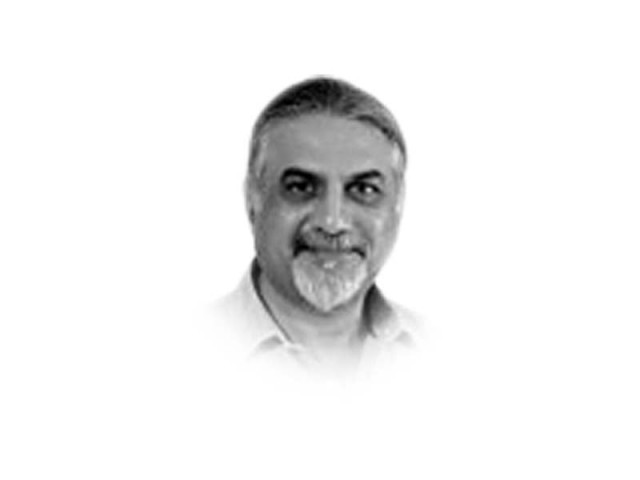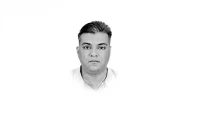The reality of Putin’s Russia
President Putin is not wrong when he stands up against the encroachment on the Russian sphere of influence

President Vladimir Putin’s Russia is drawing attention from the rest of the world and making big headlines these days. There are two ways of looking at the development of the Ukrainian crisis — the Russian way of looking at it, which we may call the Russian reality; or the position that the West has taken on the issue, thus projecting the Western reality. The whole process of Putin’s elevation to the highest political office in Russia, his efforts to collect the people of Russia under his clearly defined aims, and his reassertion of the power of the Kremlin is reminiscent of how nationalism in today’s world has become a great power. The projection of this power, by identifying with our own nation and fighting for its vital interests, is something that leaders all over the world are now doing in order to overcome the challenges posed to their territorial integrity and sovereignty.
A consistent state doctrine or an ideology is the core that shapes and directs all efforts to win the support of the people. It also acts as the sword and shield to fight, resist and eradicate all external and internal challenges to the power of the state. The ideology and state doctrine of Nicholas I, the Emperor of Russia from 1825 to 1855, was based on three elements — orthodoxy, autonomy and nationality. Putin is believed to be recycling the same ideology to win the support of his people and to justify and consolidate his rule. Is this correct?
Leading Russia in a new era of new-found nationalism, President Putin is not wrong when he stands up against the encroachment on the Russian sphere of influence. He views the Western encroachment through NATO that are close to the Russian borders as an existential threat, and security experts everywhere almost agree to his assessment. Putin’s political philosophy and the Russian reality emerging from it is to look at all the democratic movements in its former republics not as an expression of the free will of the people but as US-funded revolutions to turn the tables on Russia. It sees the expansion of NATO in countries of former Warsaw Pact as provocative and considers its own counter-action of the revival of the greatness of the Soviet past as justified. Putin promotes autocracy by being a strong ruler and leading a centralised strong government that is bent upon restoring the greatness of the Russian state. As a leader of Orthodox Russia, he is creating a fine balance between how Russia is the land of God and also a great land power, regardless of what religion people believe in. But when religion has been used as a political tool to ignite separatist movements, Putin has shown the world that when dealing with such threats he has no soft bone in his body.
There is a similarity in how Russia and Pakistan have been exposed to terrorist threats. Before Putin took over from Boris Yeltsin, Russia was rocked by a series of apartment bombings in Moscow and elsewhere, in which 294 people died. Being Prime Minister at the time, Putin’s popularity drastically rose as he declared war on Chechnya. Riding the wave of popularity on how he handled the war, he became President in March 2000. Later, in October 2002, some 40 armed men from Chechnya took over the Dubrovka Musical theatre in Moscow. There were 900 audiences present in the theatre and the siege of nine days ended only when gas was released through the ventilation system. Besides the terrorists, over 100 hostages died in the operation. There was yet another attempt in September 2004, when over 1,100 children, parents and teachers were taken hostage in Beslan by 32 armed men — similar to what happened in the APS Peshawar terrorist attack in 2014. The demands were consistent with how rouge terrorist movements blackmail the state: the immediate withdrawal of troops from Chechnya, recognition of Chechen independence, and the end of armed activities in the republic. President Putin initiated an operation in which 330 hostages died but the rest were released and a strong message was sent to the terrorists of no compromise on state sovereignty.
These two horrific events are a testament of how people can stand together with a strong leader even if the result is increased collateral damage. What people want to see is a leader who does not procrastinate and clearly stands up for the state when there is a power tussle between the state and non-state actors. No political leader in Pakistan could have survived the ferocity and severity of the two mega unexpected events that unfolded in Russia in the same year — the apartment bombings killing closer to 300 people and the sinking of a nuclear armed submarine, Kursk, resulting in the death of 118 crew members in 2000. Putin emerged from these tragedies as a strong leader. Instead of allowing these trends to change the predicted course, he reversed them by initiating a strong Chechen war, deflecting the attention of the people to look at a different reality — a reality of seeing what it takes to initiate bold action in order to fight and survive. Later, the war in Georgia and the annexation of Crimea cemented the belief of the Russian people that after a decade of the collapse of the Soviet Union, they finally had a leader who would do anything to bind the country together.
In the case of Ukraine, both the Western world and the people of Russia see Putin’s military build-up and the amassing of over 100,000 troops close to the border with Ukraine in two different ways. The West views this as Putin’s attempt of expansionism to create a greater Russia, while the people of Russia credit their President for checkmating the Western plot of steering Kiev away from Moscow.
The West accuses Putin of acting as a Tsar and presiding over a feudal economy wherein all Russian revenue generating assets are under the direct control of the state. Gazprom, Rosneft, Aeroflot, and the vast empire of the Russian Railway employing over 1.3 million people and generating revenue equivalent to 2% of Russia’s GDP all work for President Putin, thus making Russia a nation under siege. My take on this is that while Russia and China may be nations under siege, both countries today confront the world with a very important question: is liberal democracy the one best way to run a political system?
Both China and Russia have demonstrated to the world that the only way to push towards quick and speedy growth is by adopting a coercive political system. China’s rise starting in the 80s and Russia’s resurgence after Putin’s rise to power in 2000 reflect how coercion has given quick results to these countries whereas democracy in countries like Pakistan has only crawled and laboured forward, creating a deep abyss of nothingness. I think leading experts from all over the world should visit Pakistan to find out how democracy shackles a state instead of liberating it.
Published in The Express Tribune, January 30th, 2022.
Like Opinion & Editorial on Facebook, follow @ETOpEd on Twitter to receive all updates on all our daily pieces.















COMMENTS
Comments are moderated and generally will be posted if they are on-topic and not abusive.
For more information, please see our Comments FAQ